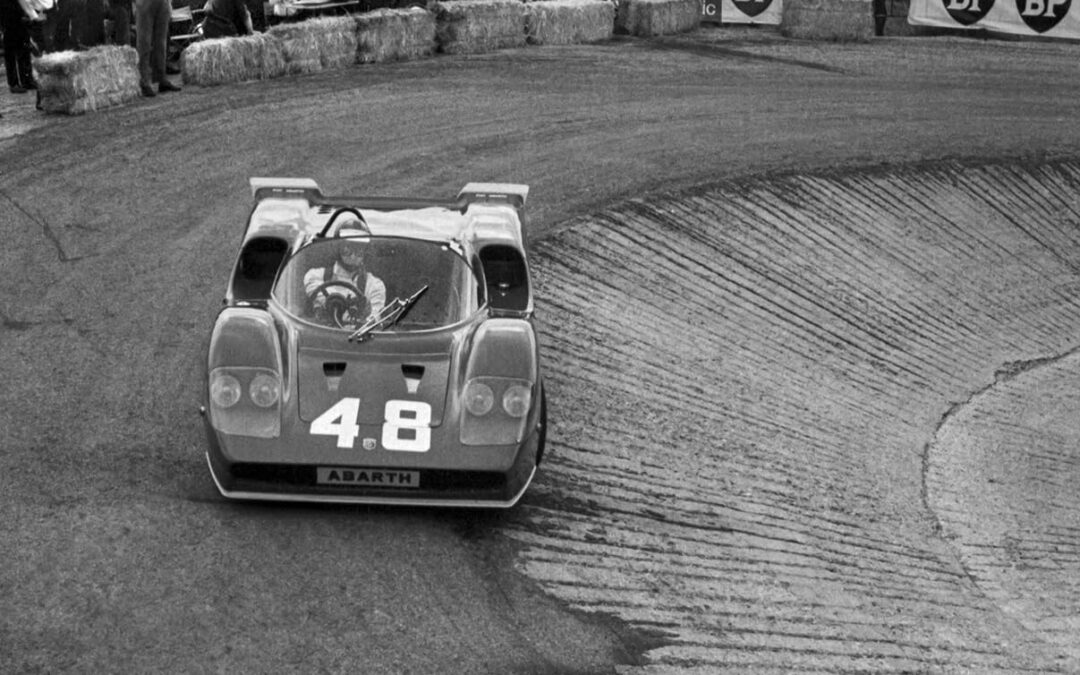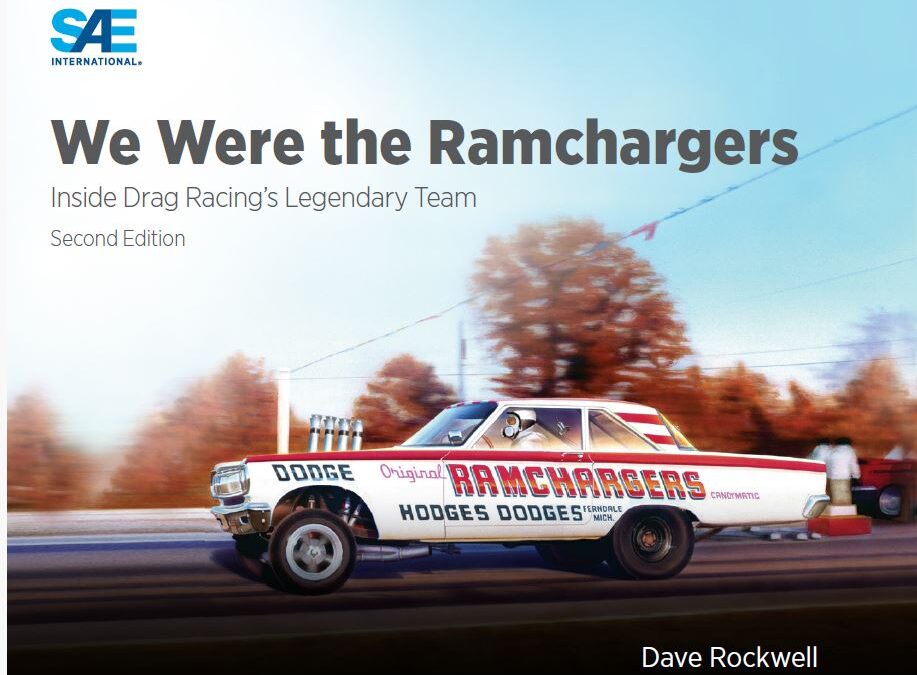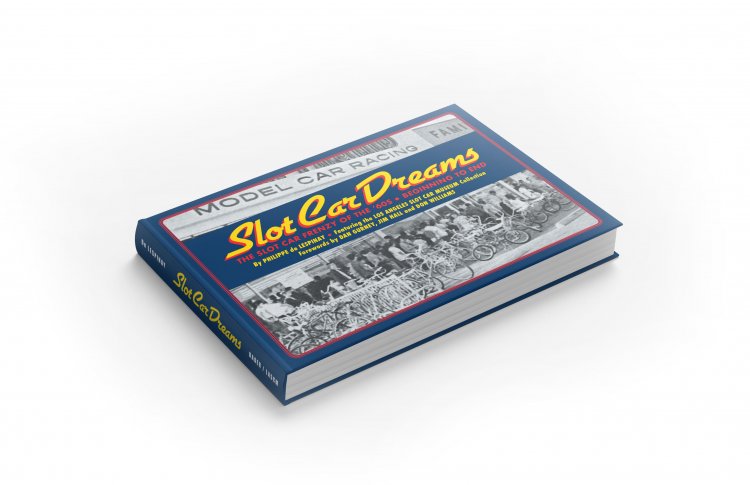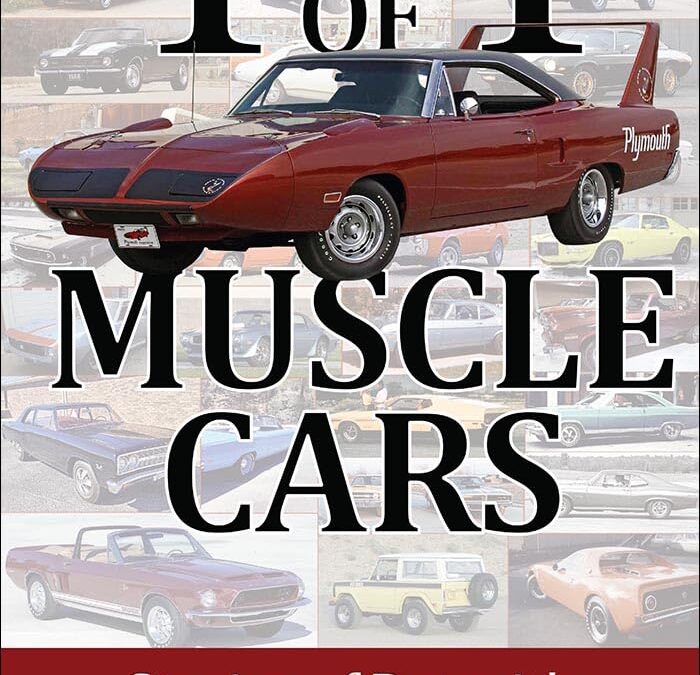
Learn about the rarest muscle cars ever produced with this new book.
In the world of muscle cars, many were produced and sold in large enough quantities that they would be considered special but not particularly rare at the time of production. The Boss 429 and Plymouth Superbird were produced for racing homologation reasons, and since they were very expensive to produce, the manufacturers ensured that they would be rare. However, there is rare, and then there is rare.
Prototypes and special factory builds, factory production cars, and super car tuners and builders are all covered in this new book by muscle-car historian Wes Eisenschenk. Some are single examples, some are very close to being the last remaining example, and all are extremely rare. Some have no surviving example known to exist. Featured cars include a Boss 429 Cougar, a 1971 Pontiac Ventura II Sprint 455, a 1965 Chevelle 300 COPO car with the L78 option, and a 1970 FK5 Deep Burnt Orange Metallic Superbird. Dealer promotional specials include a 1968 AMC AMX Von Piranha, a 1970 Dick Harrell LS6 454 Camaro, and a 1973 Nickey Chevrolet 427 Nova.
These are cars that you will read about but likely never see. For a fun ride through muscle-car history and great stories of the rarest muscle cars ever produced, add this book to your automotive library today.
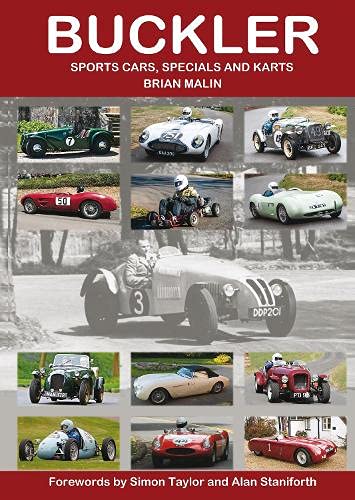
Although they were born 18 years apart, Derek Buckler and Colin Chapman were contemporaries when it came to designing and building ground-breaking sports cars in the late 1940s and early ’50s. They had much in common. Both were innovators, especially in areas of chassis design and improving the handling characteristics of their cars. Both founded successful companies and both died relatively young, Chapman in December, 1982, at the age of 54, and Buckler in 1964 at just 53 years of age. Yet, while Chapman’s Lotus went on to achieve worldwide fame, the name Buckler remains comparatively little known.
Special building was popular in the 1950s, mostly using ‘donor’ chassis from Austin 7 or Ford or simple ‘ladder’ frames but Buckler offered a multi-tubular space frame which was both stronger and lighter and, moreover, available in different models to suit different applications. He was also always ready to adapt his products to his customers’ requirements. In all of this, Buckler’s aim was to provide the impecunious enthusiast with a versatile sporting vehicle which could be used as daily transport during the week and, at weekends, in a wide range of motor sporting events from trials and driving tests to out and out racing. Often, however, the resulting Special would carry a name that concealed the Buckler contribution and a major part of the significance of Malin’s book and the vast amount of painstaking research put into it by its author is that much of that contribution is now revealed.
Buckler also, of course, made a range of complete cars starting with the versatile Mk5 and 6 and going on to encompass DD1 and DD2 with De Dion rear ends and the BB100 with backbone chassis introduced considerably before Lotus’s Elan and their other similarly based models. When karting became popular in the early 1960s, Buckler’s space frame technology found another application for which it was ideal and it became a major player in this burgeoning branch of motor sport. Buckler was also successful with its range of accessories including engine and transmission components and most notably its much admired close-ratio gears.
Brian Malin, the author, first owned a Buckler car in the 1970s and today competes in his Mk 5 in hill climbs and other events. He is an active member of the Buckler Register as well as the British Historic Kart Club and is often to be seen racing or demonstrating his Buckler kart so he is well placed to compile this comprehensive history of all things Buckler. It was first made available in loose-leaf form as long ago as 1990 but this is its first publication as a fully-fledged book, revised, updated and with additional material. Chassis design guru – and Buckler owner – the late Alan Staniforth provided the original foreword and this has been updated and included along with a new foreword by commentator and doyen of motor sport journalists, Simon Taylor.
The fourteen chapters begin with ‘Buckler and the Company’, cover the production and racing cars with some individual histories, the Buckler accessories including one chapter on the badges alone, overseas distribution – New Zealand was a particularly strong market for Buckler – and a fascinating section on the car advertisements before going on to cover the kart story in similar detail. The same number of appendices include reproductions of road tests, articles written by Derek Buckler, specifications of close-ratio gears and Buckler-tuned Ford engines, kart track tests and even one on Buckler letterheads. Malin’s work is truly encyclopaedic and therefore remarkable value for money not just as a reference on the Buckler marque but for its entertaining insight into the world of amateur motor sport of its time. The hundreds of illustrations range from reproductions of high quality contemporary and recent photographs to some admittedly lower quality originals, some of them obviously retouched to improve clarity, whose inclusion is well justified for their essential contribution to the Buckler story.
Brian Malin is to be congratulated for his perseverance in finally bringing to publication a book which is, to all intents and purposes, the full Buckler story.
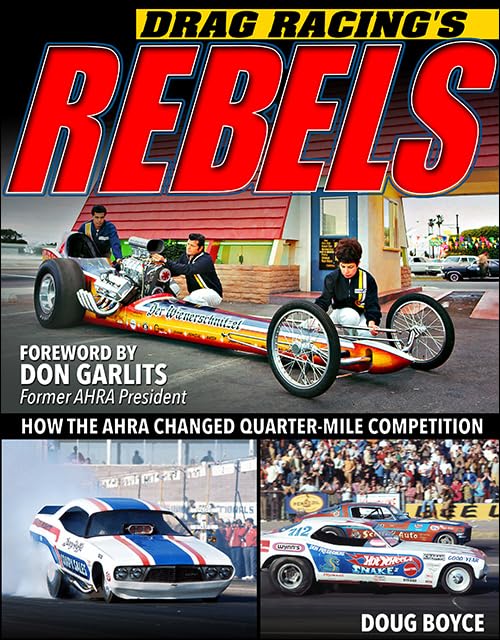
Learn the entire fascinating story of the American Hot Rod Association (AHRA) in this wonderfully illustrated color history.
When the National Hot Rod Association (NHRA) was formed in 1951 by Wally Parks, the reasoning for the formation was to “create order from chaos” by instituting safety rules and performance standards that helped legitimize the sport of drag racing. Some organization was certainly necessary. A postwar boom in automotive enthusiasm was reaching new heights, and Hot Rod magazine and the NHRA were right in the thick of it.
The NHRA hosted its first drag racing event in 1953, and in 1955, the organization staged its first national event, which was simply called “The Nationals.” The AHRA formed in 1956 as an alternative to the NHRA, where the drivers voted on the rules (rather than sanctioning bodies and tracks), and their influence on the sport was felt almost immediately.
When the NHRA denied the use of nitromethane in 1957, the AHRA approved it. When the NHRA banned aircraft-powered dragsters in 1961, the AHRA welcomed them. When the NHRA said no to the emerging Funny Car in 1965, the AHRA said yes. When fans and racers screamed for a heads-up Super Stock category in 1968, the AHRA delivered. The AHRA was called a rebel association. Some say that it was more of an association that got things done–to the delight of fans and racers. The AHRA was on equal ground with the NHRA by the 1970s, drawing enormous crowds and racer entries.
In this fascinating history, veteran author Doug Boyce tells the story of the AHRA: the rise, the competition, the events, and the eventual downfall of the organization. After AHRA President Jim Tice passed away in 1982, internal fighting for control of the association resulted in its doom. Get the whole story here, and add this wonderful volume to your drag racing library.
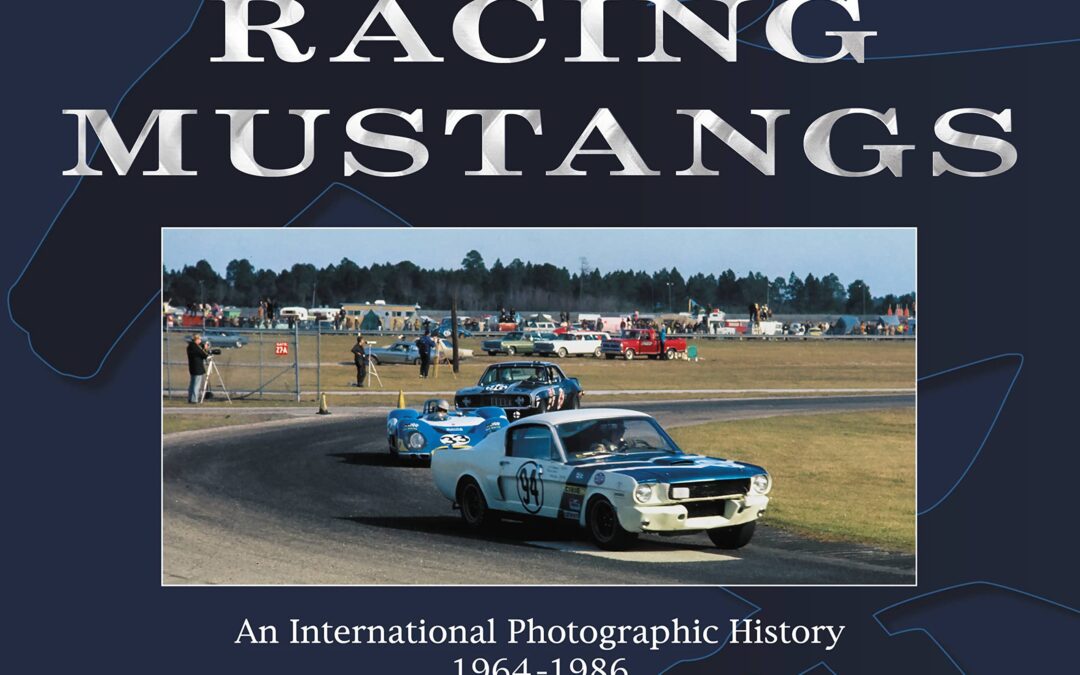
Virtually from the moment of its launch in April 1964, the Ford Mustang has been a favorite among road racers. From the Tour de France, to production sports car racing, the SCCA Trans-Am series, regional and national A/Sedan competitions, and international and domestic sedan championships in Great Britain, Europe, Australia, and New Zealand, the Mustang has enjoyed a following like few other models.
Racing Mustangs is a photographic celebration of road racing Mustangs throughout the world. It focuses on production-based cars, rather than the heavily modified tube-frame silhouette machines that began appearing in the late 1970s. Included are images of big-budget factory-supported cars competing in the Trans-Am series, right through to low-buck independents, and cars competing throughout the world.
Using only period images, including countless photos that have never before been published, this is a true photographic history, depicting the global popularity of the Ford Mustang as a road racing car.

In 1969, two of the most famous sports car manufacturers in the world, one German and one Italian, built what even today are considered the epitome of what a race car should be. The ensuing fight between the Porsche 917 and the Ferrari 512 S, driven to the limit by some of the sport’s greatest stars, has forever been regarded as a special two years in sports car racing, captivating a global audience and providing the storyline for Le Mans, an epic Hollywood film. The legendary Porsche vs. Ferrari duel started at the Daytona International Speedway in January 1970, and although the battle lasted less than two years, ending at Watkins Glen in the summer of 1971, it left a trail of memories in its smoky wake. EIGHTY FOUR HOURS OF ENDURANCE captures many of those memories in a richly illustrated book that bundles together the six American rounds of the FIA World Championship for Makes in 1970 and 1971. Daytona, Sebring and Watkins Glen. 24, 12 and 6 hours in length. Times two. Featuring 520 photographs, 230 black & white and 290 color, and supplemented by detailed race reports, results and maps, you’re taken onto the high banks at Daytona, down the concrete runways of Sebring and around the short, fast Watkins Glen circuit in upstate New York. The drivers included on the 244 pages of the book are a veritable who’s who of 1970s motor racing—Andretti, Ickx, Redman, Siffert, Rodriguez, Elford, Gurney, Larrousse, Cevert, Oliver, Posey, Beltoise, to name a few. EIGHTY FOUR HOURS OF ENDURANCE takes you back to the grid, onto the track, into the pits, around the paddock and behind the scenes for a memorable ride through time.
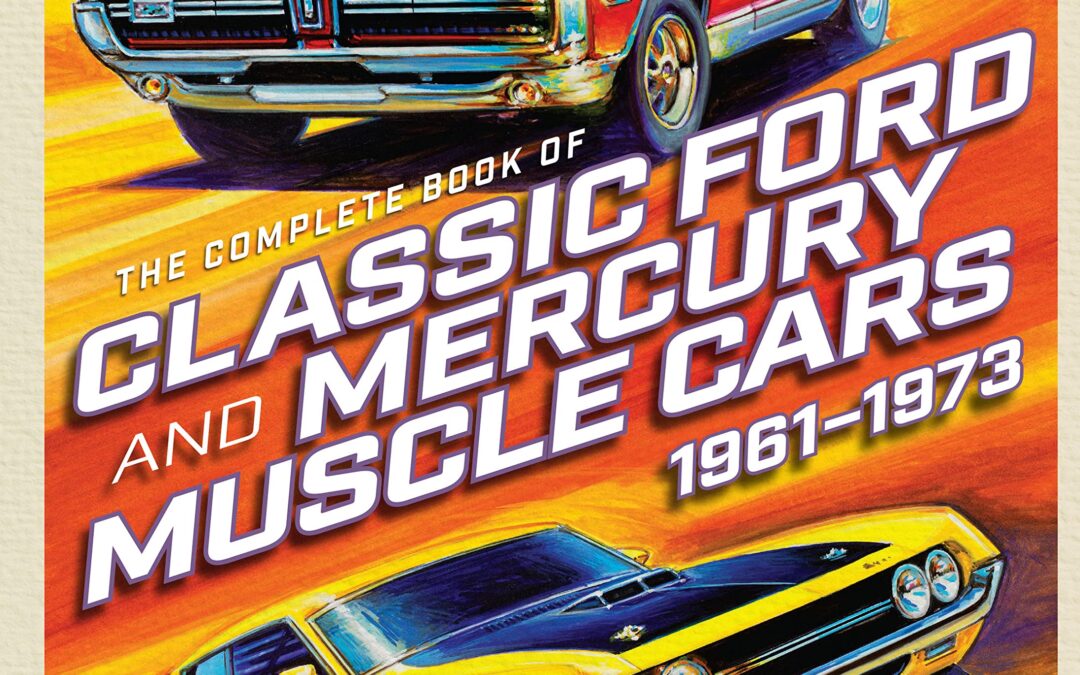
Take a stunningly illustrated and highly detailed tour through all of Ford Motor Company’s high-performance muscle cars from 1961 to 1970.
Though the Mustang remains Ford’s most famous muscle car, the company had been building muscle cars since it introduced the sleek Fairlane and Galaxie models with optional 390 cubic-inch big-block V-8 engines in 1961.
These cars were part of Ford’s Total Performance program, which tested cars in the crucible of racing at drag strips, oval circuits, European rally events, and road courses, resulting in legendary muscle cars like the Shelby Mustang, Boss 302 and 429 Mustangs, Mercury Cougar, Cyclone GT, and Spoiler.
The Complete Book of Classic Ford and Mercury Muscle Cars profiles every muscle car Ford produced during this exciting time in American automotive history. This comprehensive volume includes:
Detailed profiles of every Ford muscle car produced from 1961 to 1970, including specs for each
- Expert commentary by celebrated Mustang author Donald Farr
- Stunning modern and archival photography showcasing the cars and their engines
- Period advertisements that give a peek into the cultural era they were created in
This is the bible of muscle every disciple of Ford performance needs.
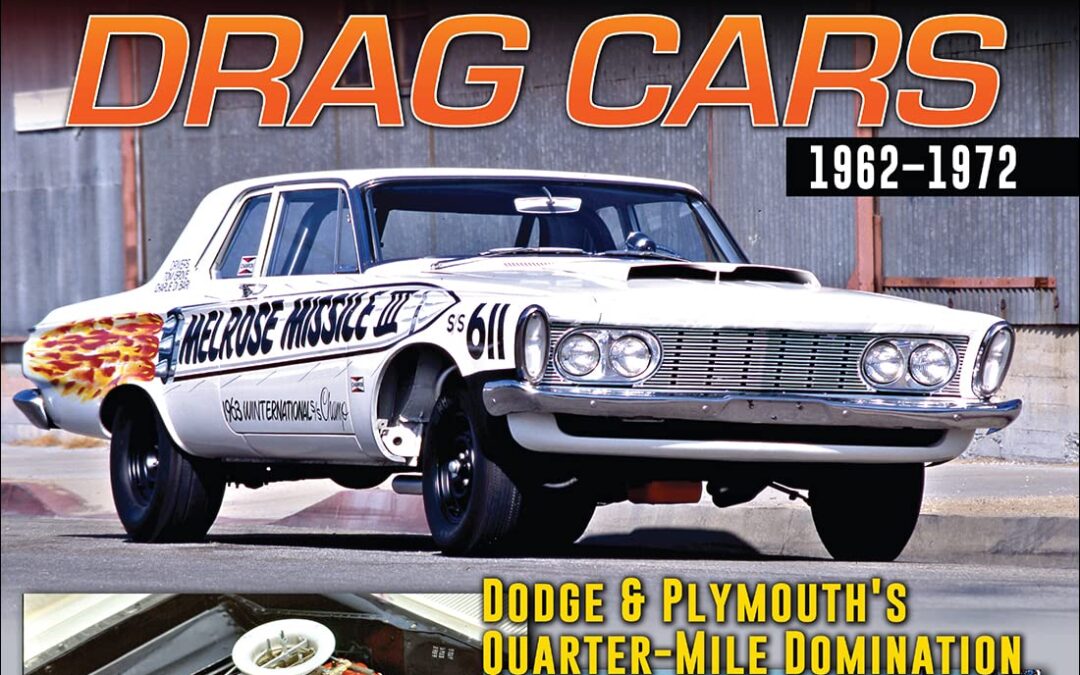
Blast down the quarter mile in your favorite 413 Long Ram, 426 Max Wedge, and 426 Hemi in Mopar Factory Drag Cars: Dodge & Plymouth’s Quarter-Mile Domination 1962–1972!
Stock-based drag racing throughout the 1960s demanded that the cars competing on the track be genuine production models and that they could be purchased by anyone. The strict regulations dictated total commitment from the manufacturers if they were to be successful. No one was more committed than Chrysler.
Chrysler attacked Stock (Super Stock) drag racing in the 1960s with the same fervor as it did the NASCAR Grand National, which itself spawned the reintroduction of the Hemi engine. Its engineers designed and produced a new factory Super Stock turnkey race car most years throughout the decade and enjoyed absolute success on the track, forever cementing its legendary performance status.
The introduction of Pro Stock in 1970 brought with it exciting heads-up racing with the expectation of producing multiple winners from a variety of brands. Instead, it resulted in total Mopar supremacy, as Hemi-powered Chrysler cars won 12 of the 15 national races throughout the first two years, prompting the NHRA to introduce weight breaks to scupper the Chrysler domination. The new 1972 regulations favored small-block-powered compact cars and were the first major step toward Pro Stock spiraling away from its roots and into the tube-frame silhouette formula seen today.
Racing historian Steve Holmes delves into this fascinating period, capturing the careers of the Ramchargers, Melrose Missile, Bud Faubel, Dick Landy, Sox & Martin, Herb McCandless, Don Grotheer, Motown Missile, and countless others, providing a blow-by-blow account of Chrysler’s factory drag car programs and the incredible cars it produced to trounce its rivals during the most epic era in Stock drag racing history.
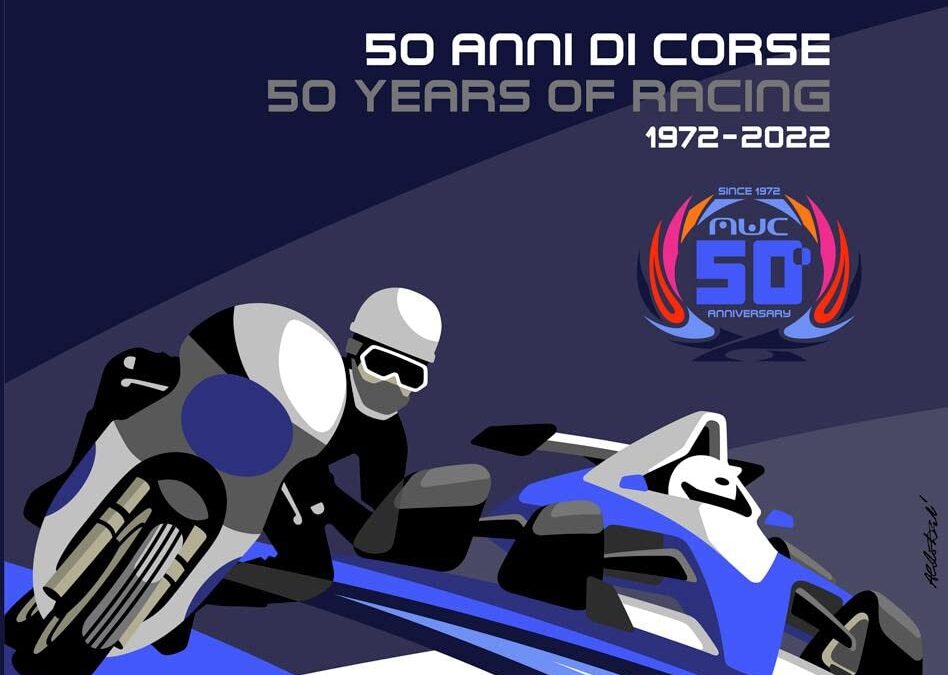
This book presents the first 50 years of the history of the Misano World Circuit “Marco Simoncelli”.
This historic track – the “Autodromo del mare” or seaside circuit – has witnessed unforgettable chapters in the history of motorsport, on two wheels and four, from the very first season in 1972 when the facility was inaugurated, through to the present day. The texts and the extraordinary photographs accompany readers along a thrilling exploration of the history of a circuit that has hosted the world’s greatest riders and drivers from every decade.
In a chronological narration that sets out from Emilia-Romagna’s Motor Valley of the early 20th century, the book describes the principal races held at the Misano circuit, from the pioneering 1970s with the unforgettable duels on two wheels involving the likes of Giacomo Agostini and Renzo Pasolini to those on four wheels featuring Italian and international drivers. Then came the 1980s, with the motorcycling World Championship arriving on the Riviera together with F.2 and F.3 single-seaters and sports prototype and GT cars. The 1990s instead heralded the Superbike championship and the Super Turismo touring cars. The new millennium has seen the circuit develop into an avant-garde facility on all fronts, capable of hosting international events and prestigious collateral events.
The volume is edited by Marco Montemaggi, coordinator and author of numerous books on Italian industrial culture and, in the motor industry, former director of the Ducati Museum and former scientific curator of the Motor Valley project. A scientific committee made up of highly experienced authors and personalities such as Andrea Albani, Davide Bagnaresi, Marco Masetti, Luigi Rivola and Sergio Remondino contributed with passion to the creation of the volume, assisted by many of the protagonists of Italian motorsport, always close to the Misano World Circuit.
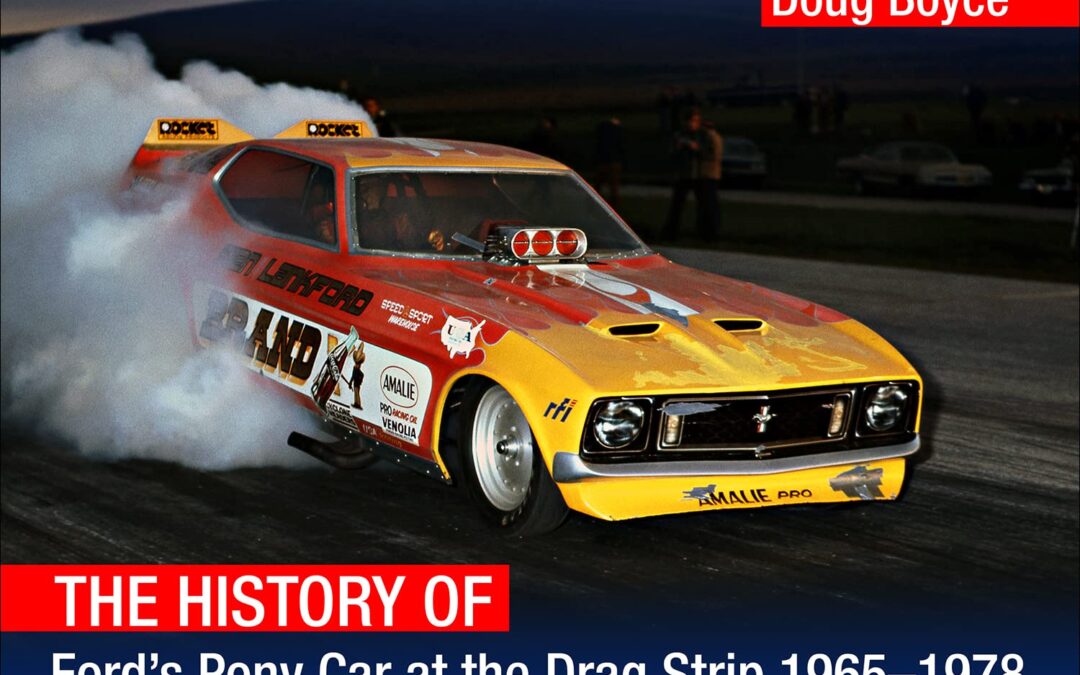
Blast down the quarter mile in the first two generations of Ford’s legendary pony car across all drag racing classes in Quarter-Mile Mustangs!
Since first becoming a mass-market success in mid-1964, the Ford Mustang has made millions of passes down the quarter mile on sanctioned drag strips. With styling flared toward the youth, aftermarket parts manufacturers saw an enormous opportunity to produce go-fast components to aid in propelling Ford’s pony car down the 1320. The success of these cars was immediate.
In the hands of successful and seasoned pros, such as Gas Ronda, Bill Lawton, and Dick Brannan, Ford unleashed the devastatingly potent 1965 A/FX Mustang fastback, which was built by Blue Oval stalwarts Holman & Moody with the 427 SOHC (Cammer) engine that unleashed havoc on mother Mopar.
From those very first factory drag cars through the fabled 1968-1/2 Cobra Jets, drag racing historian Doug Boyce highlights the many successes of pioneers, such as “Dyno” Don Nicholson, Les Ritchey, Phil Bonner, Hubert Platt, and Al Joniec. However, it’s not just all doorslammers. As A/FX transitioned into Funny Car, a whole new chapter in Mustang drag racing was written with Mickey Thompson taking the reins and steering Mustangs to success throughout the late 1960s and early 1970s.
The muscle car-era Mustangs joined the Mustang II and soldiered on the best they could as ever-changing rules hampered Ford’s new pony body, with drivers Bob Glidden and Nicholson trying to squeeze every bit of performance out of the diminutive pony.
Quarter-Mile Mustangs: The History of Ford’s Pony Car at the Drag Strip 1964-1/2-1978 brings forth the most in-depth coverage of these cars at the drag strip. Don’t get caught sleeping at the light!
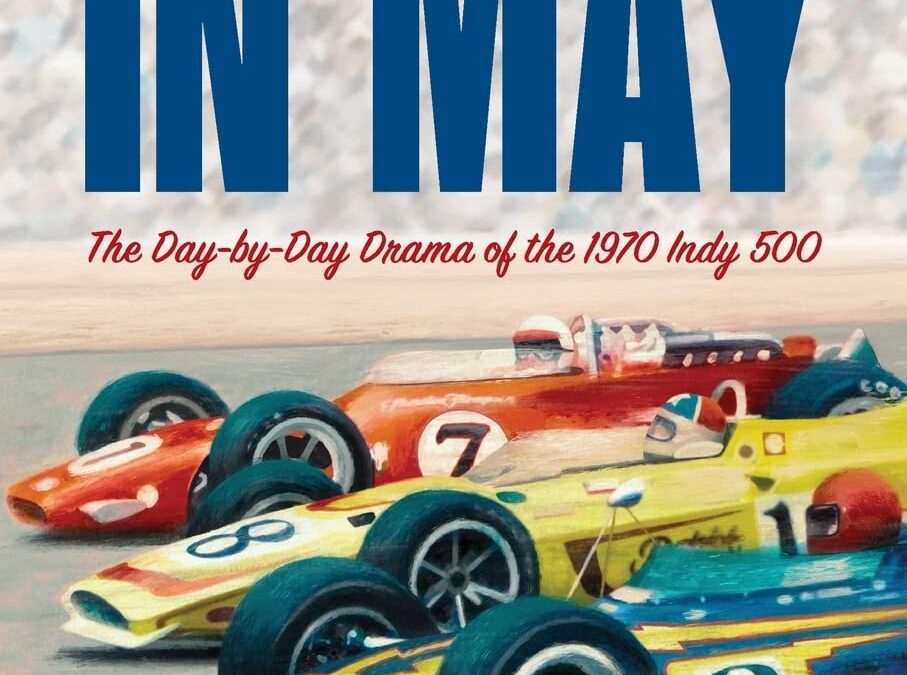
Thirty days! From the moment the drivers entered in the 1970 Indianapolis 500 rolled their cars onto the track for practice until the command “Gentlemen, start your engines,” they faced thirty days of intense action. The drivers needed to go fast enough to earn one of thirty-three starting positions. Only then would they have a chance to win what sportswriters and fans called “the Greatest Spectacle in Racing.”
And award-winning sportswriter Hal Higdon was there to report on the action: hovering in the pits next to the racers in their cars, wandering into Gasoline Alley to tell their stories, absorbing all the excitement the month of May brings to Indianapolis.
Here is the tale, day by day, of those thirty crucial days—the drivers with fast cars and slow cars, the drivers with rich sponsors and those with little money, the drivers with talent and those who need good luck to place high or even qualify. The list of competitors in 1970 was formidable, and included Mario Andretti, Dan Gurney, Mark Donahue, A.J. Foyt, and the Unser brothers. Add the owners: Roger Penske and Andy Granatelli.
Once the gentlemen start their engines, the race begins. The danger builds. A tiny twitch heading into a turn can result in bent metal and lost lives. Even the fans live in danger.
This is the story of the 1970 Indy 500, but the scenes are repeated on the stained turns of the Indianapolis Motor Speedway year after year.
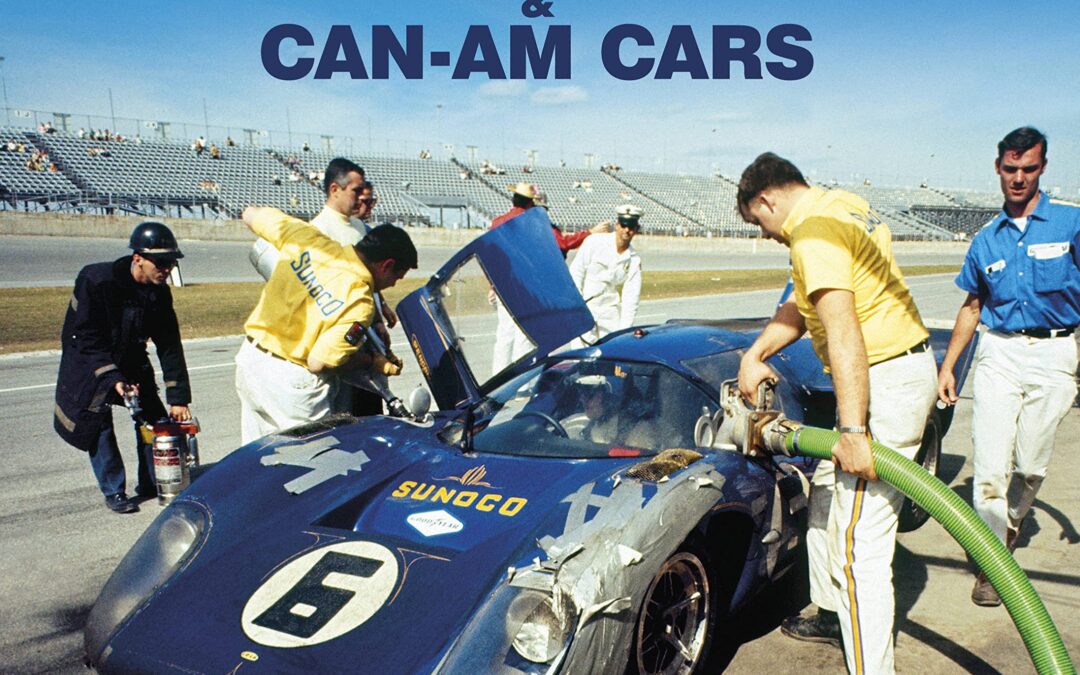
n the most glittering era of sports car racing, the late 1960s and early 1970s, the Lola T70 and its descendants radiated star quality.
These big racers, both brutal and beautiful, graced the Can-Am stage in North America as open spyders and the world sports car championship as closed coupés. Powered by big American V8 engines, they were massively fast and exceedingly popular, both with fans and the racers themselves. In this important new book, which has taken Lola enthusiast Gordon Jones three decades to complete, the racing history of the T70 and the Can-Am models that followed — from T160 to T310 — is exhaustively recorded, complete with a superb array of over 600 photographs. All sports car devotees will treasure this labour of love.
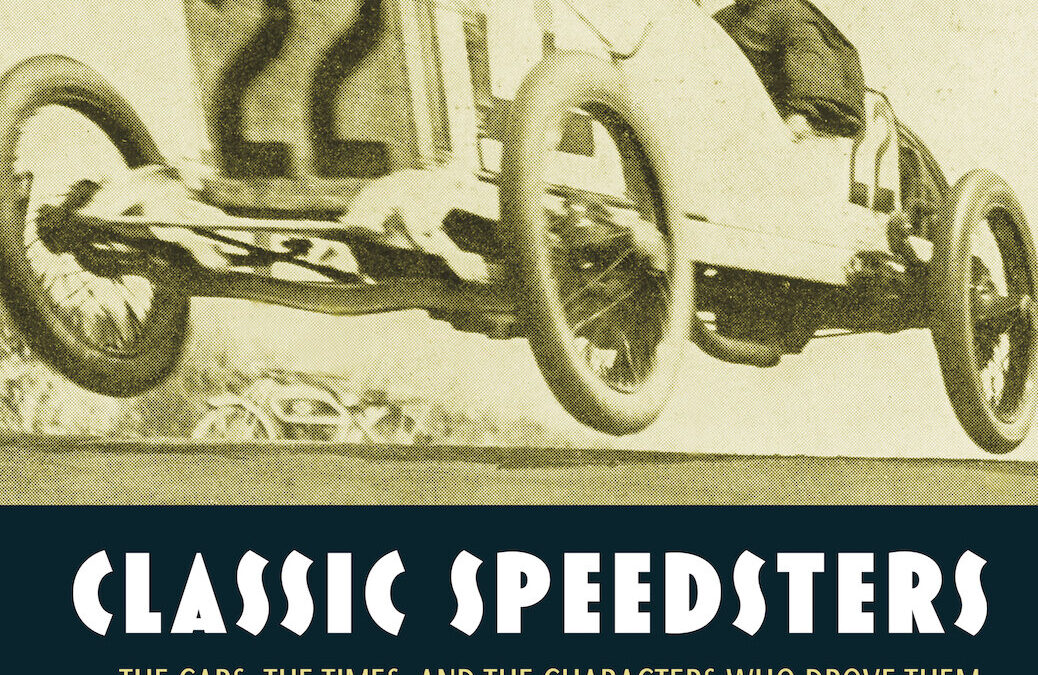
12 Chapters, 12 Car Companies, 12 Famous Owners And a collection of speedsters that will inform and entertain!
Have you ever wondered when and how the hotrod movement started? Or speed and endurance events? Landspeed racing? Hillclimbing? Or anything involving power, speed, or just having some fun in an automobile? This book—Classic Speedsters—covers all of that, and much more.
Classic Speedsters: The Cars, The Times, and The Characters Who Drove Them chronicles the most significant vehicles ever to have traveled American roads and racetracks. Speedsters were the pizzazz cars of their era. Speedsters were owned by entertainers, captains of industry, the wealthy, and in some cases, the everyday guy or gal. They were often expensive, but they were always fast and sexy. Speedsters were America’s first sports cars.
Each chapter frames the birth and evolution of a company that produced a speedster model in its lineup and includes a biography of a famous owner of the period. This book traces the journey of the speedster concept across several time periods, from 1894 to 1970. It examines the speedster’s story among 12 automotive companies, 11 of which were American.
This is the first automotive book to study the speedster concept in depth. A broad swath of speedsters from 12 different manufacturers (actually—there are 13 companies in the book) are examined in order to distill the essence of this singular model.
The companies and the speedsters that they produced are framed within the context of their time to better understand how technology and market forces shaped the success and failure of these companies (and their cars). The people who were drawn to and purchased these vehicles—why did they? This too is examined and discussed.

Motor Racing in the 70s has 242 photographs from a large number of countries and categories, many of them rare and part of private collections. This is a reference book on global motor racing activities in the 1970s which strives to provide much obscure information, analysis and data on single seater, touring car, GT and sports car circuit racing and hill climbs during the decade. In addition to Formula 1, Formula 2, Formula 5000, NASCAR, Can-Am, Interserie, World Manufacturers Championship, Lower Formulae, European Touring Car Championship, Formula Indy, IMSA, SCCA, British Club Racing, and much more is covered, including huge lists of venues, drivers and car manufacturers not available elsewhere. The domestic scenes and venues in 85 countries in all inhabited continents are discussed, in addition to a new section on standalone races and short series, providing much surprising information. Truly a must-have for any motor racing fan, thousands of new pieces of information have been added to the 472-page, 180,000 word book. The car maker section has been upgraded, identifying in which countries different brands raced. The list of champions worldwide has also been greatly expanded, making this reference work even more invaluable to the true racing enthusiast than the first edition. Thousands of drivers from over 85 countries are covered. Learn more about Mario Andretti, Emerson Fittipaldi, James Hunt, Niki Lauda, A.J. Foyt, Al Unser, Richard Petty, Jacky Ickx, Jackie Stewart, Rick Mears, Peter Gregg, Brian Redman, Derek Bell, Henri Pescarolo, Cale Yarborough, Jochen Rindt, Jack Brabham, Mark Donohue, Peter Revson, Denis Hulme, Nelson Piquet. Tons of statistics specific to the decade, an analysis how racing developed from a romantic to an organized activity during the era, incisive commentary on financial issues, sponsors, non-driver personalities, female racers, media, year-by-year highlights. Hundreds of sources have been consulted in over 12 languages, and much of the information covered is available for the first time in English.
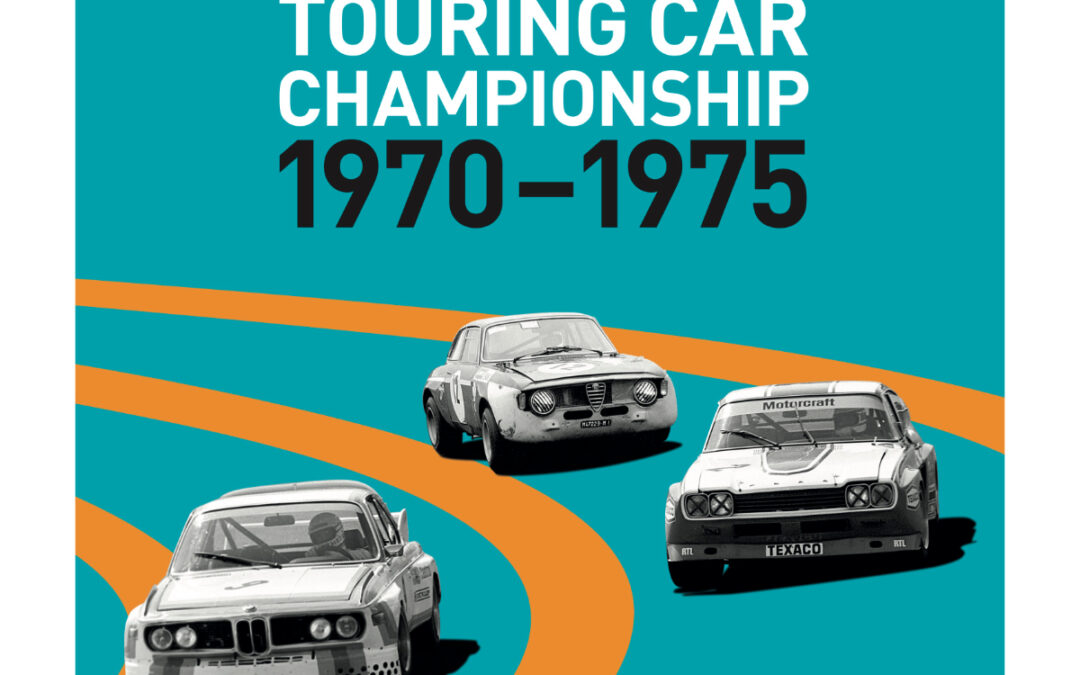
The first half of the 1970s was a golden era for touring car racing. The battles between Ford and BMW are legendary, while Alfa Romeo played its own important part in deciding races and championships.
In Germany touring cars provided a platform for young drivers to launch international careers. Jochen Mass, Hans-Joachim Stuck, Hans Heyer and Klaus Ludwig all started their careers in tin-tops.
In the European Touring Car Championship, they didn’t just come up against national and international touring car warhorses like Toine Hezemans, Dieter Glemser, Gian Luigi Picchi, Dieter Quester and Carlo Facetti, but also Formula 1 stars current and future like Jackie Stewart and Niki Lauda.
This book delves into exciting races from the era and details the technology behind all of the important cars, including those from Abarth, Chevrolet, Fiat, Mazda, Mercedes and Opel. It’s a comprehensive overview of a fascinating time in touring car racing.
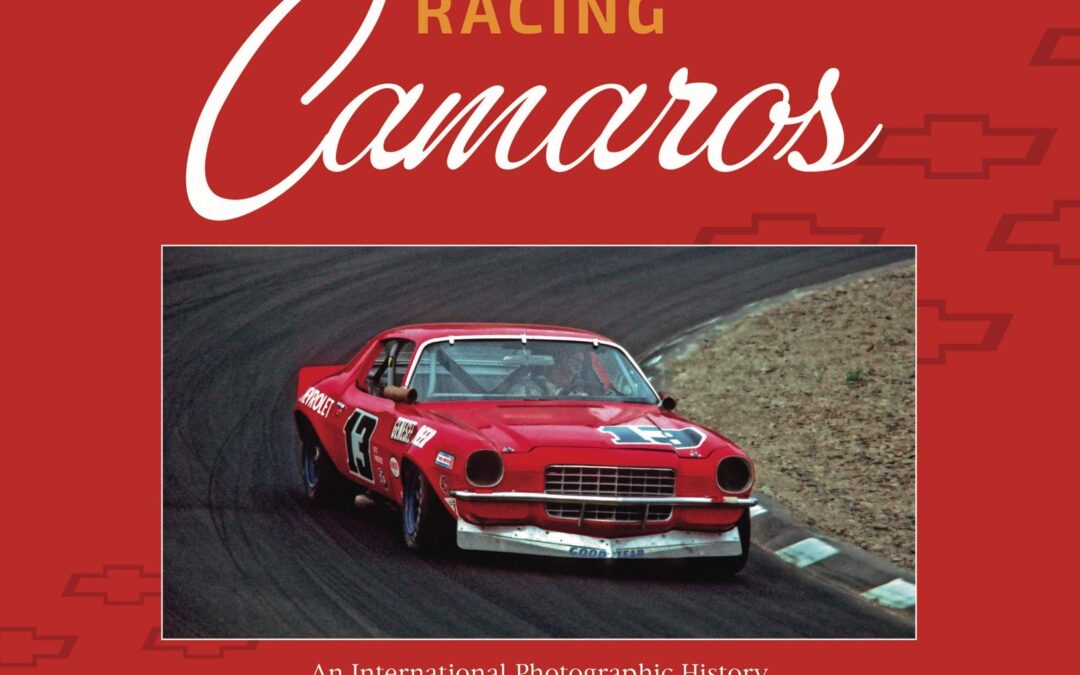
Chevrolet created the Camaro in response to the runaway sales success of the Ford Mustang, the first pony car. The Mustang went on sale in April 1964, and by August that same year, General Motors launched an intensive program to bring its own pony car to market. In September 1966, the Camaro went on sale.
Chevrolet wanted the Camaro to be better than the Mustang in every area, including style, ride-quality, and performance. To that end, with the Mustang having already achieved so much racing success, Chevrolet wanted to beat it on the track also.
Racing Camaros: An International Photographic History 1966 – 1986 is a photographic celebration of road racing Camaros throughout the world. It focuses on production-based cars, rather than the heavily modified tube-frame silhouette machines that began appearing in the late 1970s. Included are images of big-budget factory-supported cars competing in the Trans-Am series, right through to low-buck independents, and cars competing throughout the world.
For the first time, the international road racing representation of the Camaro is featured in a book, which includes countless photos that have never been published. Technical detail is provided throughout, from concept and design, right through its racing career, and the challenges and developments that took place to make it a winner. Only period images have been used. This is a true photographic history depicting the global popularity of the Chevrolet Camaro as a road racing car.
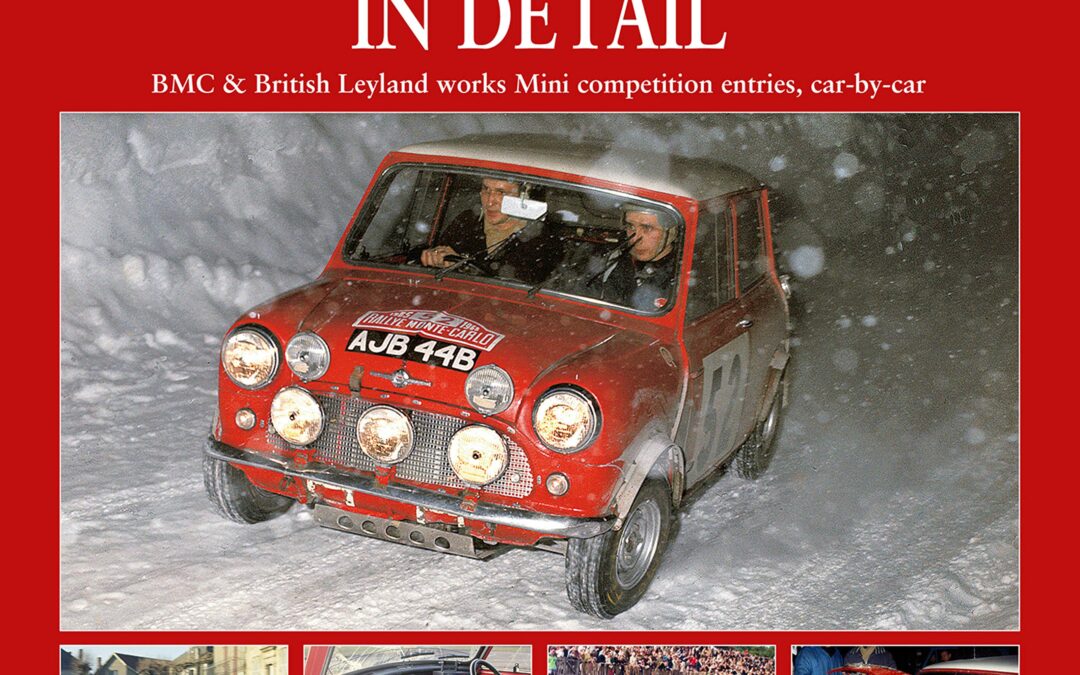
The works Minis had a long and distinguished competition history between 1959 and 1970, when British Leyland bosses closed the Abingdon Competition Department. The car started its competition career chasing class awards with the diminutive 850cc Mini, but once race car designer John Cooper persuaded BMC that they should build a hot version, the Mini Cooper was born and things moved up a gear.
With the introduction of the Mini Cooper S, the car soon became a world beater. Winning the 1964 Monte Carlo Rally in the hands of Paddy Hopkirk was a watershed moment which the Abingdon team repeated three times. During that 11-year period, 77 works Minis were built, competing in more than 300 events, most of them international rallies. The 1969 season, when the works Minis went racing, is also covered, along with the rallycross events.
Works Minis in Detail covers each one of those 77 cars which, in their distinctive red and white paintwork, were a force be reckoned with wherever they competed. Build details of every car are provided, drawn from factory build sheets, with information also on when cars were reshelled and identities swapped. The details of the events entered and the drivers are the result of analysing hundreds of contemporary race and rally reports.
The result is the most in-depth study of the works Minis ever published, made possible by years of research by Robert Young, a lifelong Mini enthusiast. As the Mini Cooper Register’s ex-works registrar, club chairman and for many years archivist, he is well placed to write with authority. A proud owner himself, he has intimate knowledge of the little red cars.
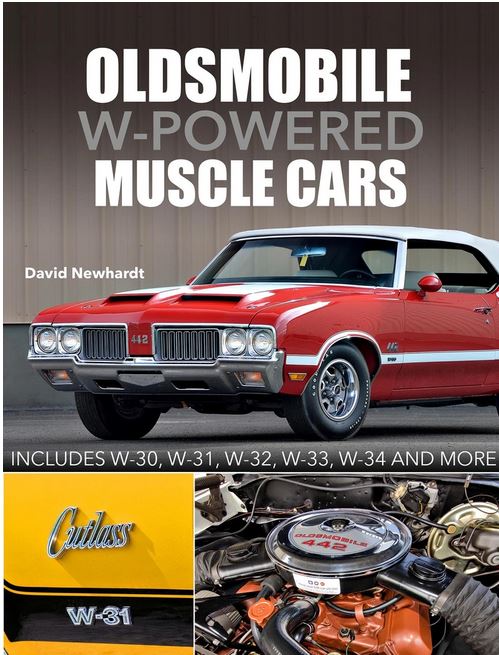
Relive Oldsmobile’s most potent muscle car offerings when the simple letter W intimidated all takers.
Oldsmobile’s foray into the developing muscle car wars of the 1960s came as little surprise to most in the automotive industry. What was surprising was that it wasn’t the first to develop it! Oldsmobile’s Rocket 88 has been viewed by some as the beginning of performance offerings from automobile manufacturers. The 4-4-2 was Oldsmobile’s volley back at the Pontiac GTO, and in 1966, Olds attempted to spike the ball home with its all-new W-30 high-performance drag racing package.
During the course of the next pair of decades, Oldsmobile offered the W-code on a host of platforms (the Cutlass, F-85, 4-4-2, Toronado, and Delta 88) with an assortment of engine packages (400, 455, and 350). As muscle cars fell by the wayside during the struggling 1970s, Oldsmobile continued to carry its flagship W-30 all the way through the 1980 model year.
This book by muscle car historian and esteemed photographer David Newhardt revisits and celebrates Oldsmobile’s legendary W-optioned performance machines. So, sit down, strap in, and let Dr. Oldsmobile do the driving.
